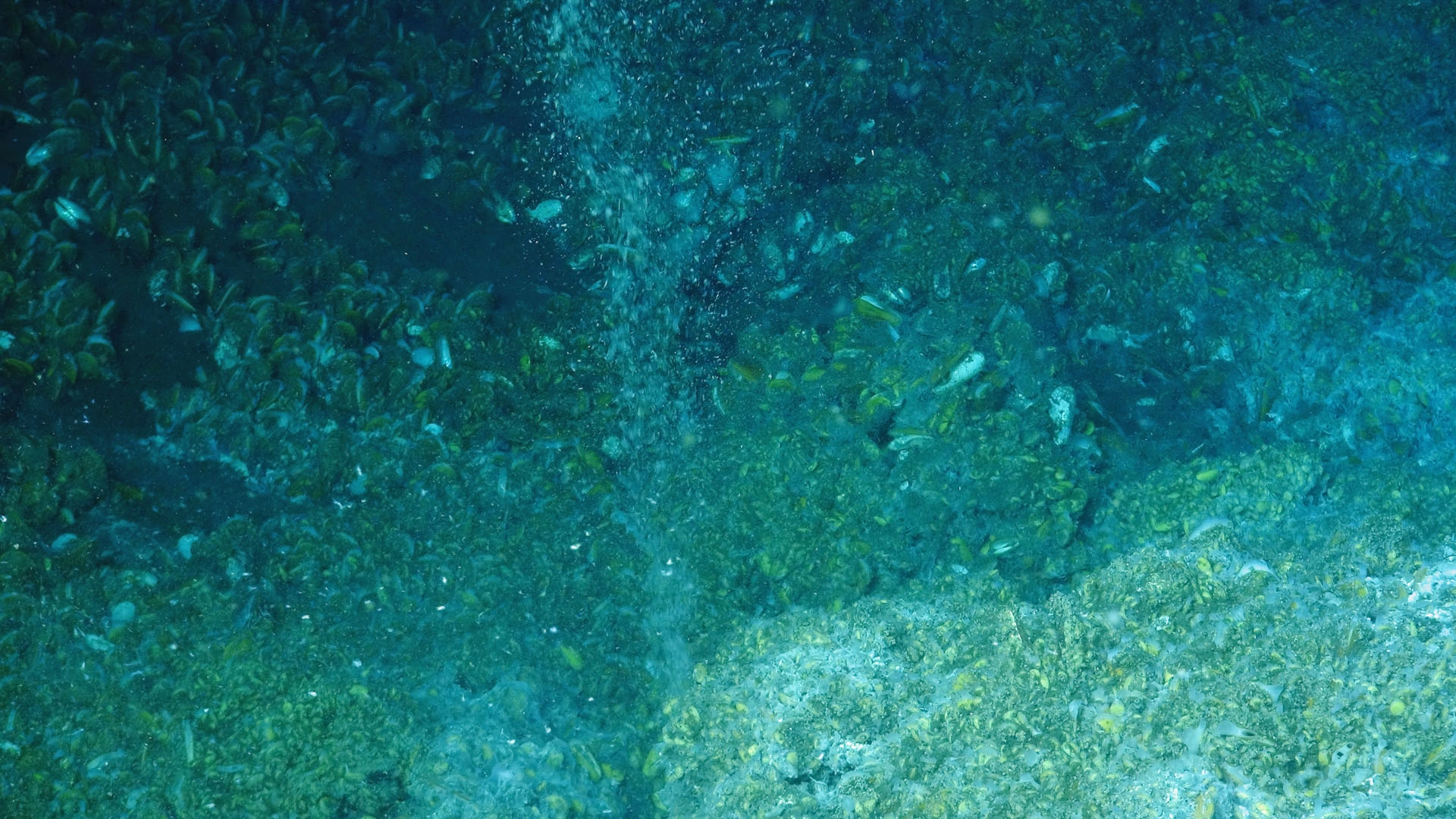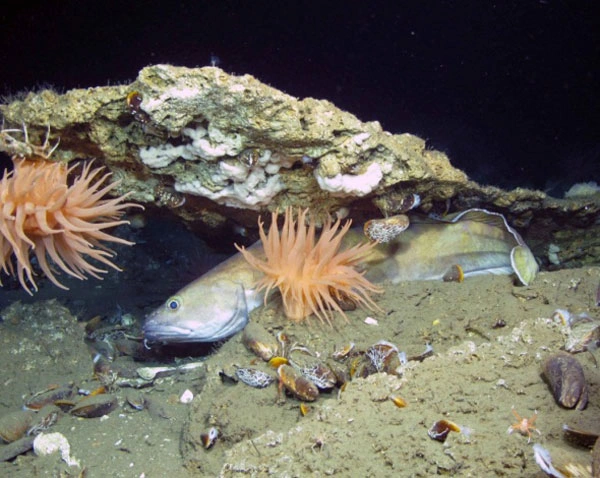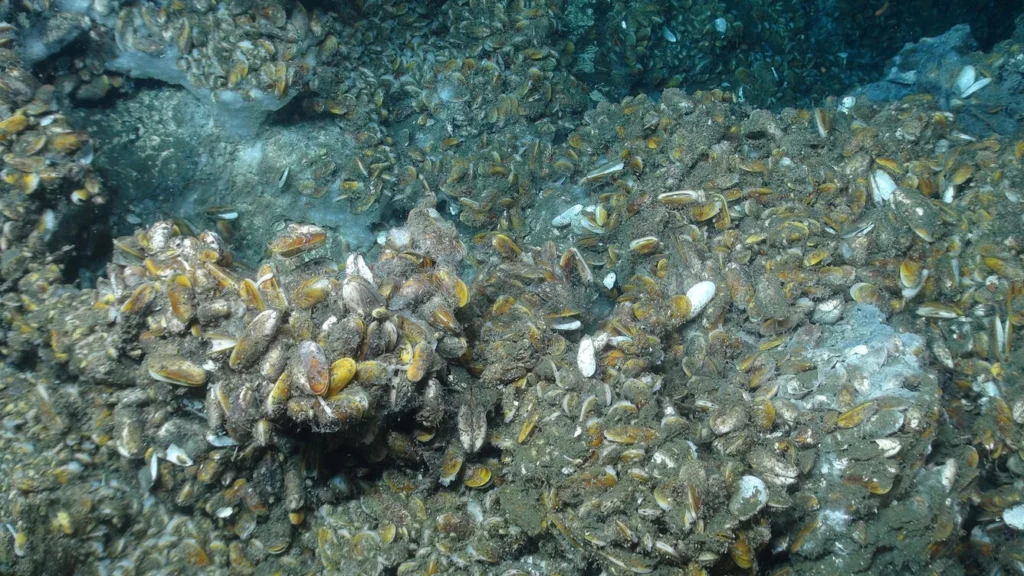Physical Address
304 North Cardinal St.
Dorchester Center, MA 02124

Beneath the ocean’s surface lies a mysterious world where life thrives under extreme conditions. Deep ocean methane seeps are one such ecosystem, hidden in the darkness and sustained by methane gas seeping from the seafloor. These methane seeps host unique communities of organisms that have evolved to survive without sunlight, deriving energy from chemicals instead. In this article, we will explore the fascinating dynamics of methane seeps and the extraordinary life that inhabits these remote habitats, revealing their ecological significance and the wonders they harbor.

by USGS
Methane seeps, also known as cold seeps, are areas on the ocean floor where methane and other hydrocarbons escape from beneath the seabed into the water column. These seeps can be found along continental margins and deep within ocean basins, at depths ranging from hundreds to thousands of meters. Unlike hydrothermal vents, which are fueled by heat from the Earth’s interior, methane seeps are driven by chemical processes, with methane gas serving as the primary energy source for the ecosystems around them.
The methane released at these seeps originates from organic material buried deep within the seafloor that has decomposed over millions of years. As the gas migrates toward the surface, it seeps out in bubble plumes, creating an environment rich in methane. Despite the cold, high-pressure, and oxygen-poor conditions of the deep ocean, life around methane seeps has adapted in remarkable ways.



ROV SuBastian/Schmidt Ocean Institute
One of the most extraordinary aspects of life at methane seeps is its ability to thrive in the absence of sunlight. Unlike most ecosystems on Earth, which rely on photosynthesis as the primary means of energy production, organisms at methane seeps depend on chemosynthesis. In this process, bacteria and archaea use methane as an energy source to convert carbon dioxide into organic matter, forming the base of the food chain.
These methane-consuming microbes, known as methanotrophs, play a crucial role in methane seeps. They not only fuel the ecosystem but also help mitigate methane emissions into the water column and, ultimately, the atmosphere. This is significant, as methane is a potent greenhouse gas, and the activity of methanotrophic bacteria helps regulate its release from the seafloor.
The organisms that inhabit methane seeps are highly specialized, forming symbiotic relationships with the methane-eating bacteria that provide them with nutrients. Among the most iconic species are seep mussels and clams, which host chemosynthetic bacteria within their tissues. These mollusks rely on their symbiotic partners to convert methane into food, allowing them to thrive in an otherwise inhospitable environment.
Another fascinating resident of methane seeps is the tubeworm. These creatures, which can grow several meters long, anchor themselves to the seafloor and host symbiotic bacteria in their tissues. Like mussels and clams, tubeworms derive energy from the bacteria, which process methane or hydrogen sulfide to produce nutrients for their host.
In addition to mollusks and tubeworms, methane seeps are home to a variety of other organisms, including crabs, polychaete worms, and fish. Many of these species are endemic to methane seeps, meaning they are found nowhere else on Earth. The biodiversity of these ecosystems is surprisingly high, given the extreme conditions under which they exist.
Methane seeps are more than just isolated oases of life in the deep ocean. They play a vital role in the global carbon cycle and have broader implications for climate regulation. The activity of methanotrophic bacteria at seeps reduces the amount of methane that escapes from the seafloor into the ocean and atmosphere, helping to limit the impact of this greenhouse gas on global warming.
In addition, methane seeps contribute to the overall health and stability of deep-sea ecosystems. They create hotspots of biodiversity in the otherwise sparse and barren deep ocean, supporting a range of species that are specially adapted to these environments. These ecosystems, in turn, provide food and habitat for other deep-sea organisms, forming complex and interconnected food webs.
The presence of methane seeps also offers insights into the resilience of life on Earth. The ability of organisms to survive and thrive in such extreme conditions—relying on chemical energy rather than sunlight—hints at the possibility of life in other similarly extreme environments, such as beneath the ice of Jupiter’s moon Europa or Saturn’s moon Enceladus.
Studying methane seeps offers a glimpse into the geological and biological history of our planet. These ecosystems provide valuable information about the processes that have shaped Earth’s carbon cycle over millions of years. Methane hydrates, which are solid forms of methane found beneath the ocean floor, are a potential future energy resource, and understanding the dynamics of methane seeps could help us better manage these reserves.
Moreover, methane seeps may have been crucial in the early evolution of life on Earth. The conditions at ancient methane seeps—low oxygen, high methane, and reliance on chemosynthesis—are thought to resemble the environments where the earliest forms of life may have arisen. By studying modern methane seeps, scientists can gain insights into the origins of life and the evolution of deep-sea ecosystems.
Despite their remote location, methane seeps are not immune to human activities. Deep-sea trawling, oil and gas exploration, and climate change all pose threats to these fragile ecosystems. The extraction of methane hydrates as a potential energy source could disrupt the delicate balance of methane seeps, leading to the loss of biodiversity and the release of stored methane into the atmosphere.Conservation efforts aimed at protecting deep-sea ecosystems, including methane seeps, are increasingly important as human activities encroach upon these habitats. International agreements and marine protected areas (MPAs) are critical tools in preserving the biodiversity and ecological functions of methane seeps. By protecting these unique ecosystems, we safeguard not only the remarkable species that live there but also the vital role they play in regulating Earth’s carbon cycle and climate.
Deep ocean methane seeps are one of the ocean’s most remarkable and enigmatic ecosystems. Hidden beneath the waves, they support life in the most extreme conditions, relying on methane as an energy source through the process of chemosynthesis. The biodiversity of these ecosystems, coupled with their role in regulating methane emissions and contributing to global carbon cycling, makes them essential to the health of the ocean and the planet.As we continue to explore the depths of the ocean, methane seeps remind us of the resilience of life and the interconnectedness of Earth’s systems. Protecting these ecosystems is not only a matter of preserving biodiversity but also of understanding and safeguarding the processes that sustain life on Earth.